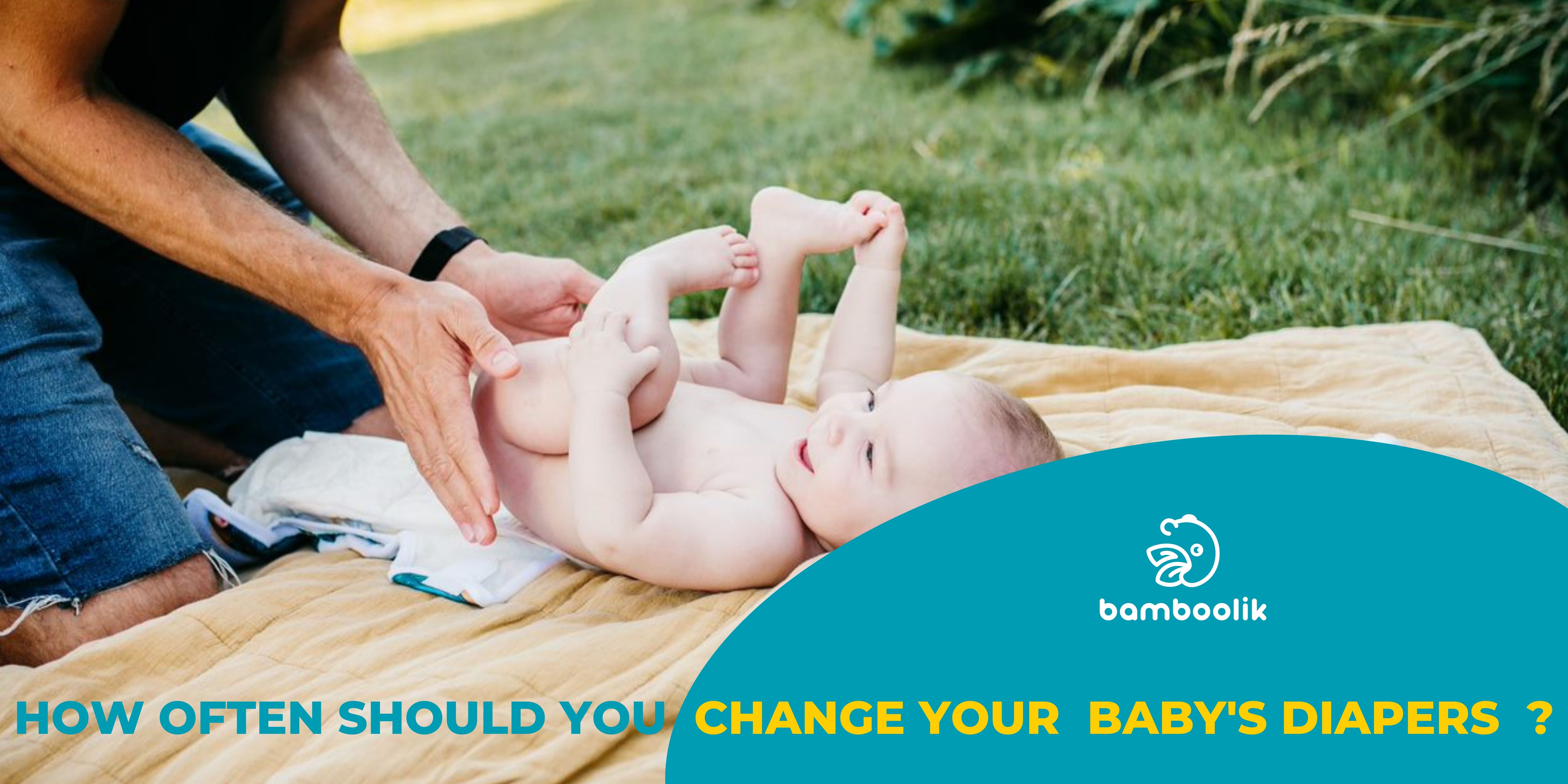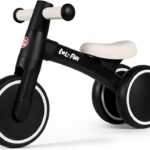How Often Should You Change Your Baby’s Diaper at Night? Whenever it’s wet or soiled, typically every 2-4 hours. Newborns may need more frequent changes.
Ensuring your baby’s comfort and hygiene through the night is critical, which often entails multiple diaper changes. A newborn’s delicate skin requires prompt attention to prevent diaper rash and discomfort. Throughout the first few months, when infants urinate more frequently and have irregular bowel movements, vigilant parents keep a close eye on their baby’s diapers, even during the night.
This level of care promotes better sleep for both the baby and the parents, as a dry diaper can mean uninterrupted sleep stretches. As your baby grows, the frequency of night-time changes may decrease, but attentive diaper monitoring remains an essential part of caring for your little one. Keeping these practices in mind will contribute to your infant’s well-being and overall health.
Introduction To Nighttime Diapering
Becoming a new parent brings plenty of challenges, and one of them is mastering the art of nighttime diapering. A peaceful night’s sleep for both you and your baby often depends on staying dry and comfortable. In this section, you’ll learn just how indispensable proper diaper changes are for a good night’s rest.
Importance Of Diaper Changes For Infant Comfort
Keeping your baby’s comfort in mind means regular diaper checks, even at night. A dry diaper soothes your baby, leading to uninterrupted sleep and happier mornings. Babies require frequent changes, as their tiny bladders can’t hold much. Remember, a comfortable baby is a baby that sleeps better and longer.
Role Of Diapers In Preventing Rash And Irritation
Diapers play a critical role in safeguarding your baby’s delicate skin. Regular changes help prevent moisture build-up, which can cause diaper rash and skin irritation. A clean, absorbent diaper is your best defense against these uncomfortable conditions. Regardless of the time, keeping your infant rash-free is a priority.

Recognizing The Signs: When To Change A Diaper
‘Recognizing the Signs: When to Change a Diaper’ is essential for your baby’s comfort and skin health. Night time changes can be tricky; you don’t want to wake your baby unnecessarily. Yet, waiting too long might cause diaper rash or uncomfortable sleep. This section will guide you through key signs that signal it’s time for a change, even at night.
Physical Cues And Discomfort
Babies often communicate their needs through body language. When it comes to diaper changing, watch for these physical cues:
- Crying or fussiness that starts suddenly could mean a wet or soiled diaper.
- Look for squirming or restlessness in their sleep, indicating discomfort.
- Checking their posture can help too. If they pull their legs up or show signs of strain, it might be time for a change.
Babies will not like a full diaper. They might wake up from sleep. If they feel wet, they will show you with their actions. Keep an eye out for these signs.
Wetness Indicators And Diaper Technology
Fortunately, modern diapers offer features that make it easy to check for wetness:
- Many brands include a wetness indicator, a line that changes color when wet. This visual sign means it’s time to change the diaper.
- Diapers now have absorbent cores that lock in moisture. This helps keep the surface dry longer, but if the diaper feels heavy, it’s full.
Keep in mind, that not all diapers have these indicators. You can often just feel if the diaper is heavy. Always trust your instinct, even if the wetness indicator isn’t showing a full diaper.
Maximizing Sleep: Balancing Changes With Rest
Getting enough sleep is vital for both parents and babies. Nighttime diaper changes can disrupt this rest. To preserve those precious hours of sleep, finding the right balance is key. Parents often wonder how to change diapers at night without causing too much disturbance. This guide will provide strategies and routines to minimize sleep disruptions while keeping your baby dry and comfortable.
Strategies For Minimizing Sleep Disruptions
There are several tactics to ensure that diaper changes impact sleep as little as possible:
- Change before feeding – Tend to your baby’s diaper right before a nighttime feed. This way, they can drift back to sleep easily after feeding.
- Use dim lights – Keep the room softly lit to signal that it’s still nighttime.
- Stay quiet and calm – A soothing environment helps babies return to sleep faster.
- Select diapers wisely – Opt for high-absorbency nighttime diapers to reduce the need for changes.
- Protect skin – Use a barrier cream to prevent diaper rash and potential discomfort that can wake your baby.
Setting Up A Routine For Nighttime Diapering
Creating a routine can greatly benefit night diapering:
- Consistent schedule – Aim to change your baby’s diaper around the same time each night within their natural waking periods.
- Prepare supplies – Keep diapers, wipes, and creams within arm’s reach for quick changes.
- Speed and efficiency – Work swiftly and confidently to minimize the time your baby is awake.
Practicing these strategies and sticking to a routine creates a restful atmosphere for both you and your baby. Babies thrive on predictability, and parents can enjoy more uninterrupted sleep knowing their approach limits disturbances.
Choosing The Right Diaper For Extended Wear
Restful nights depend on the right diaper for your baby. Long-lasting dryness is key. With countless options available, it’s
vital to choose a diaper designed for extended wear to keep your baby comfortable and dry until morning. Do not fret, as we guide you through
selecting the ideal nighttime diaper that stands up to the test.
Features Of Nighttime Diapers
Nighttime diapers boast special features. They are extra absorbent and made with materials that lock wetness away. Look for:
- High Absorbency Layers – To ensure your baby stays dry.
- Leak Guards – These prevent leaks and blowouts.
- Breathable Materials – To keep the skin healthy.
- Comfort Fit – For a snug yet cozy fit.
- Wetness Indicator – A color-changing strip to signal a change.
Comparing Brands And Absorbency Levels
Brands matter in the quest for a dry night’s sleep. Compare diapers based on absorbency using the information below:
| Brand | Absorbency Rating | Key Features |
|---|---|---|
| Brand A | High | 12-Hour Protection, Leak Lock |
| Brand B | Medium | 10-Hour Protection, Eco-Friendly Materials |
| Brand C | Varies | Customizable Absorbency, Natural Fibers |
Note the hour rating and pick a brand that aligns with your baby’s needs. Every brand offers unique features geared towards comfortable and efficient overnight protection. A right choice means your baby, and therefore you, can look forward to peaceful, uninterrupted sleep.
Expert Tips For Efficient Nighttime Changes
Night can be unsettling for your baby and tiring for you. Efficient nighttime diaper changes are key. The goal is minimizing disruptions for a faster return to sleep. Follow these expert tips to help the process.
Preparing The Changing Station
A well-stocked station is critical. Ensure it’s within arm’s reach.
- Diapers: Have plenty stacked.
- Wipes: Open the pack to grab wipes easily.
- Creams: Keep them close to handle diaper rash.
- Extra Clothes: In case of leaks.
- Trash Bin: Dispose of diapers quickly.
Quick And Quiet Diapering Techniques
Speed and silence matter. Try these techniques.
- Use night-time diapers for extended protection.
- Practice the diaper change during the day.
- Gentle motions soothe your baby. No rushed moves.
- Dim lights help keep your baby sleepy.
- Warm wipes prevent jolts from coldness.

Frequently Asked Questions: How Often Should You Change Your Baby’s Diaper At Night
How Often To Change Newborn’s Diaper At Night?
Newborns typically require diaper changes every 2-4 hours, even at night, to prevent rash and ensure comfort.
Is Nighttime Diaper Change Always Necessary?
Nighttime changes are essential if the diaper is soiled, or your baby seems uncomfortable and cannot sleep.
What Signs Indicate A Diaper Change At Night?
Signs for a diaper change include fussiness, a strong smell, noticeable sagging, or the baby waking up crying.
Can Babies Sleep Through A Wet Diaper?
Many babies can sleep through a wet diaper if it’s only mildly damp and not cause them discomfort or rashes.
Does A Dry Night Diaper Mean Dehydration?
A consistently dry diaper over several hours at night might indicate dehydration, especially if there are no wet diapers during the daytime.
Conclusion
Establishing a diaper-changing routine at night ensures your baby stays comfortable and sleeps well. Aim for balance; excessive changes disrupt sleep, while few risk rashes. Heed your child’s needs and consult your pediatrician for personalized advice. Remember, a dry, happy baby means peaceful nights for all.






